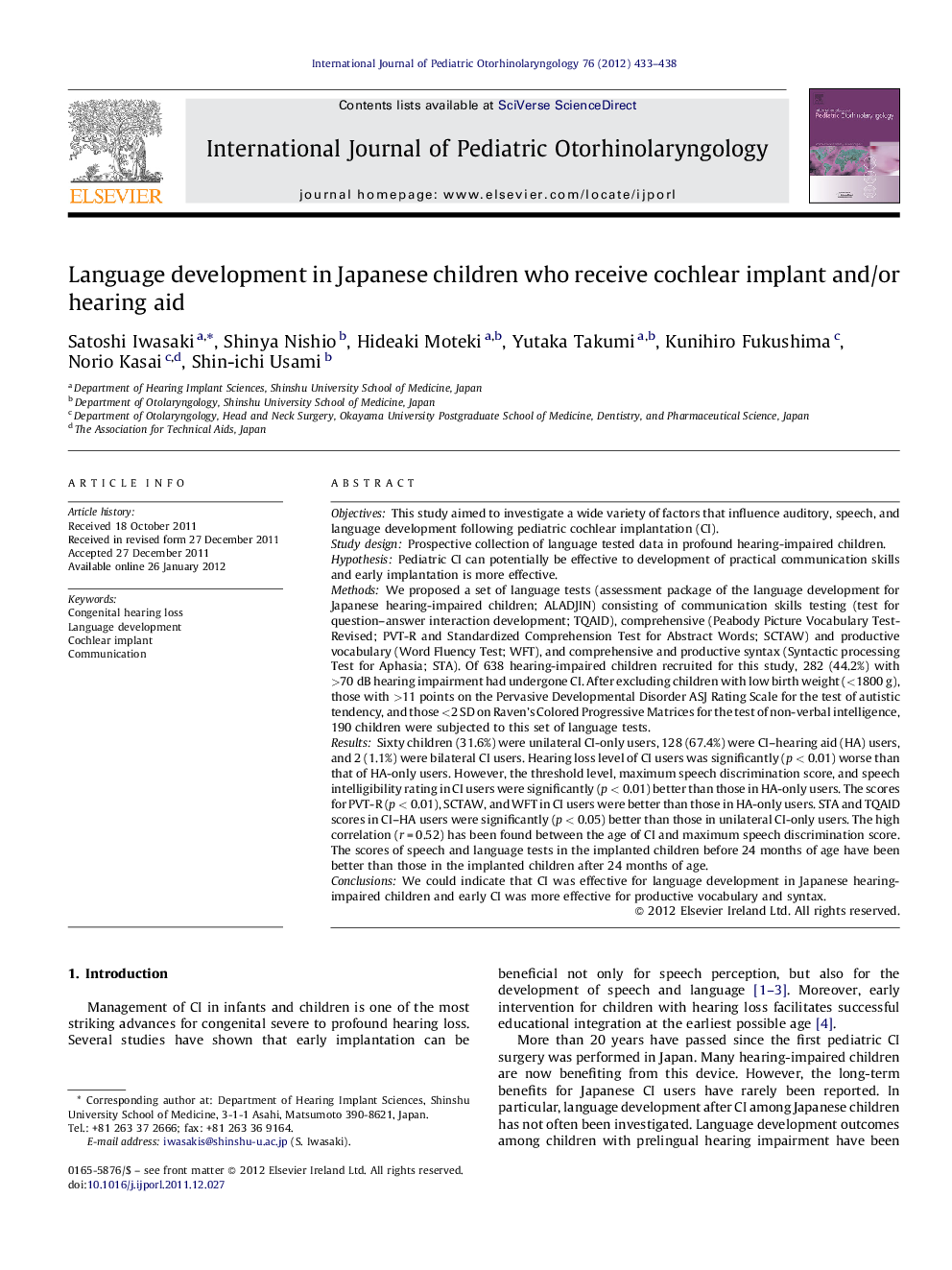| کد مقاله | کد نشریه | سال انتشار | مقاله انگلیسی | نسخه تمام متن |
|---|---|---|---|---|
| 4113165 | 1606034 | 2012 | 6 صفحه PDF | دانلود رایگان |

ObjectivesThis study aimed to investigate a wide variety of factors that influence auditory, speech, and language development following pediatric cochlear implantation (CI).Study designProspective collection of language tested data in profound hearing-impaired children.HypothesisPediatric CI can potentially be effective to development of practical communication skills and early implantation is more effective.MethodsWe proposed a set of language tests (assessment package of the language development for Japanese hearing-impaired children; ALADJIN) consisting of communication skills testing (test for question–answer interaction development; TQAID), comprehensive (Peabody Picture Vocabulary Test-Revised; PVT-R and Standardized Comprehension Test for Abstract Words; SCTAW) and productive vocabulary (Word Fluency Test; WFT), and comprehensive and productive syntax (Syntactic processing Test for Aphasia; STA). Of 638 hearing-impaired children recruited for this study, 282 (44.2%) with >70 dB hearing impairment had undergone CI. After excluding children with low birth weight (<1800 g), those with >11 points on the Pervasive Developmental Disorder ASJ Rating Scale for the test of autistic tendency, and those <2 SD on Raven's Colored Progressive Matrices for the test of non-verbal intelligence, 190 children were subjected to this set of language tests.ResultsSixty children (31.6%) were unilateral CI-only users, 128 (67.4%) were CI–hearing aid (HA) users, and 2 (1.1%) were bilateral CI users. Hearing loss level of CI users was significantly (p < 0.01) worse than that of HA-only users. However, the threshold level, maximum speech discrimination score, and speech intelligibility rating in CI users were significantly (p < 0.01) better than those in HA-only users. The scores for PVT-R (p < 0.01), SCTAW, and WFT in CI users were better than those in HA-only users. STA and TQAID scores in CI–HA users were significantly (p < 0.05) better than those in unilateral CI-only users. The high correlation (r = 0.52) has been found between the age of CI and maximum speech discrimination score. The scores of speech and language tests in the implanted children before 24 months of age have been better than those in the implanted children after 24 months of age.ConclusionsWe could indicate that CI was effective for language development in Japanese hearing-impaired children and early CI was more effective for productive vocabulary and syntax.
Journal: International Journal of Pediatric Otorhinolaryngology - Volume 76, Issue 3, March 2012, Pages 433–438